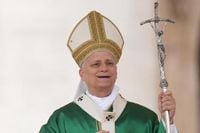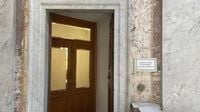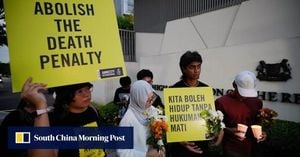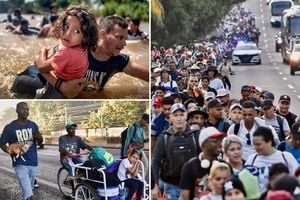In a move that’s sending ripples through the Vatican and beyond, Pope Leo XIV has set about undoing a series of contentious financial reforms enacted under his predecessor, Pope Francis. On October 6, 2025, Leo signed his first executive decree, repealing a 2022 law that had concentrated control of the Holy See’s assets in the hands of the Vatican bank, officially known as the Institute of Religious Works (IOR). The new law, published the same day, signals a marked shift in Vatican financial policy, reopening the door to using non-Vatican banks for managing the Church’s considerable global assets.
According to the Associated Press, the 2022 law, which had taken many inside the Vatican by surprise, declared that the management of the Holy See’s assets was the "exclusive responsibility" of the IOR. This centralization contradicted the Vatican’s founding constitution, which designates the Administration of the Patrimony of the Apostolic See (APSA) as the office responsible for overseeing real estate and financial holdings. Even Francis, Vatican officials say, realized the contradiction and had intended to address it before his death in April 2025. But the task fell to his successor.
Leo’s decree, titled Coniuncta cura, was signed September 29 but made public on October 6. It states that while the Vatican generally uses the IOR, it may turn to non-Vatican banks in other countries if the Vatican’s investment committee "deems it more efficient or convenient"—a clear departure from the previous requirement that all Vatican funds be managed onshore. As reported by The Pillar, Leo’s decision was made “having carefully evaluated the recommendations unanimously approved by the Council for the Economy,” the very body established by Francis to maintain oversight of Vatican financial affairs.
This is not just a bureaucratic shuffle. The 2022 rescript had been introduced in the wake of the infamous 2018 London property scandal, in which Vatican officials lost nearly 200 million euros on a disastrous real estate investment. The scandal led to the conviction of nine people, including Cardinal Angelo Becciu, for financial crimes. In response, Francis had demanded that all curial assets and investments be centralized under APSA and conducted exclusively through the IOR, which had earned a reputation for transparency and international oversight.
But Leo’s new law effectively rolls back those safeguards, once again allowing curial departments to use international banks and investment vehicles. While this might seem like a vote of confidence in the Vatican’s current financial health, critics warn it could also reintroduce the very risks that led to past scandals. As The Pillar notes, “Leo’s motu proprio this week effectively rolls back a key legal safeguard brought in to prevent another London property scandal.”
What’s behind Leo’s optimism? In a candid interview last month, the new pope played down concerns about a looming financial crisis at the Vatican, insisting he is “not losing sleep” over the Holy See’s finances. He pointed to APSA’s 2024 financial report, which showed a positive result of over 60 million euros, and asked, “Why are we crying about a crisis?” But as Vatican insiders quietly note, those headline profits don’t reflect the Holy See’s overall annual deficit or the ballooning pension fund liability, which was estimated at nearly 1.5 billion euros a decade ago and is believed to have grown since.
Still, Leo’s willingness to decentralize financial management represents a significant shift in papal confidence. Where Francis saw centralization as a way to shore up transparency and accountability, especially after the London debacle, Leo appears to believe that curial departments can be trusted to manage their own investments—and that the Church’s liquidity is strong enough to weather any storms. The Pillar suggests that Leo may have been persuaded either by unexpectedly positive financial returns or by a selective presentation of the Vatican’s true fiscal health. Alternatively, the move could be a response to urgent needs for higher returns that the more conservative IOR couldn’t deliver quickly enough.
Leo’s reforms haven’t stopped at financial regulations. On September 27, he removed Monsignor Roberto Campisi, a top administrator closely associated with Francis, from the Secretariat of State and reassigned him to Paris as ambassador to UNESCO. Campisi had been appointed by Francis as president of a new fundraising commission to help the cash-strapped Holy See. The commission’s statutes and membership, announced on February 26, 2025, included only Italians with no professional fundraising experience—a glaring omission, given that Americans are among the Vatican’s largest donors and are known for demanding transparency and accountability. Campisi’s transfer suggests that Leo is planning a revamp, possibly bringing in members with greater fundraising gravitas and credibility to reassure key donors.
The timing of Leo’s new law was notable: it was announced on the same day he met with the Knights of Columbus, a powerful U.S. Catholic charitable organization and a major donor to the Vatican. During the meeting, Leo thanked the knights for their recent project—the restoration of Bernini’s baldacchino canopy over the altar of St. Peter’s Basilica—perhaps signaling a new era of engagement with American donors and a commitment to greater transparency.
Meanwhile, the Vatican’s ongoing financial trial, which Francis had championed as a sign of his commitment to reform, continues to drag on. The trial, involving a cardinal convicted of embezzlement, is now in the appeals phase. According to the Associated Press, prosecutors are scrambling to salvage their case after making procedural errors in their appeals filings. The appeals court has adjourned the trial until February 3, 2026, giving the Vatican’s high court—composed of four Francis loyalist cardinals, none with a juridical background—time to weigh in on the prosecutors’ motions.
All these developments point to a Vatican in the midst of a profound transition. Leo’s moves are being watched closely by Vatican insiders, donors, and critics alike. Is this the dawn of a new era of financial stability and trust in curial competence, or the beginning of another cycle of risky maneuvering that could lead to fresh scandals? Only time will tell. For now, Leo’s reforms have set a new tone—one of cautious optimism, but also of renewed debate about the best path forward for the Church’s finances.
As the Vatican’s financial machinery shifts gears under new leadership, the world will be watching to see whether history repeats itself or a new chapter truly begins.






